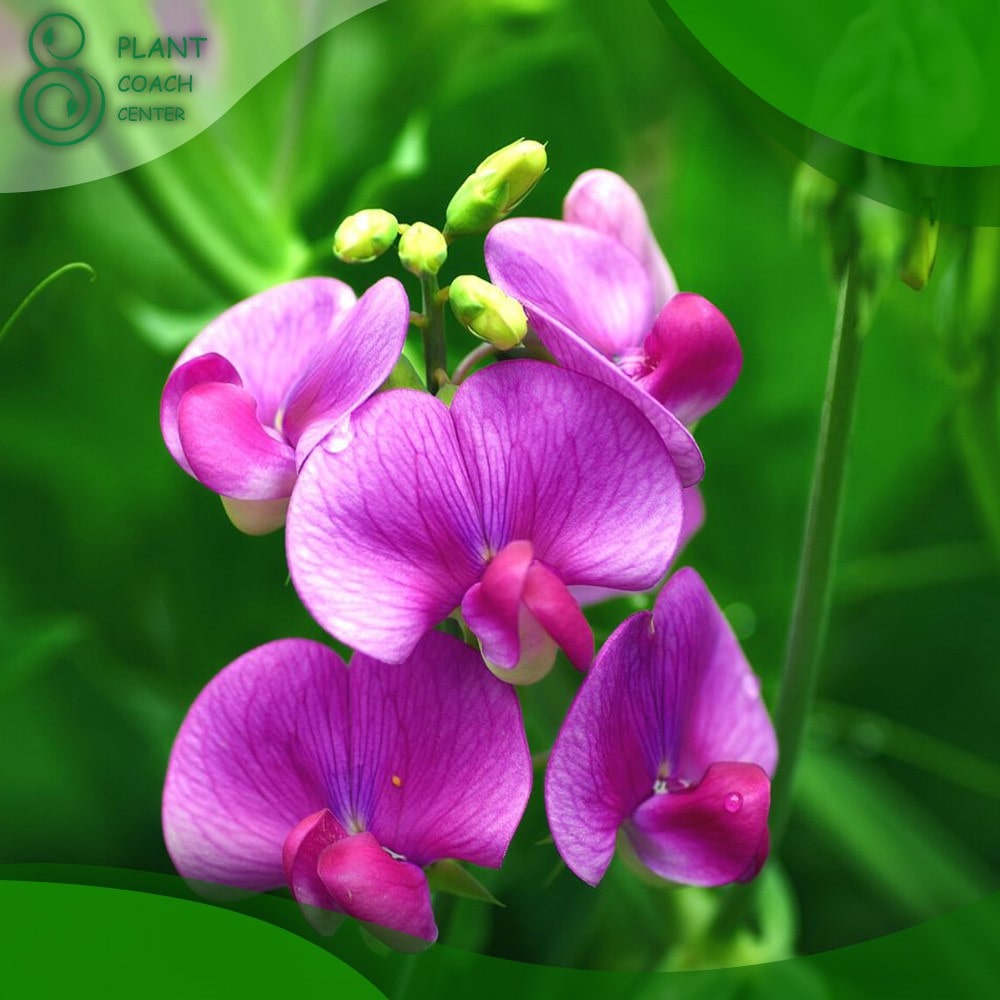When Do You Plant Sweet Peas?
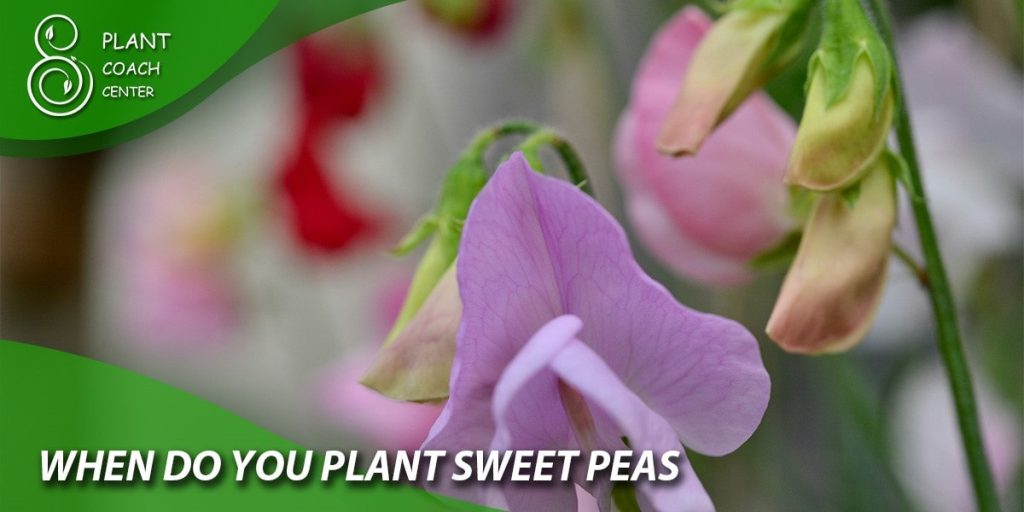
Welcome to the enchanting world of sweet peas, where vibrant hues and delicate tendrils combine to create a floral symphony that captivates novice and seasoned gardeners alike. The pursuit of planting these charming blossoms is a journey filled with anticipation, patience, and the promise of gratifying beauty.
As you embark on this botanical adventure, mastering the art of planting sweet peas requires more than just a green thumb; it demands an understanding of the intricate dance between nature’s rhythms and the gardener’s nurturing touch.
In this guide, we unravel the secrets behind the question that lingers in every gardener’s mind: When do you plant sweet peas? From deciphering the perfect timing for sowing to exploring the nuances of soil preparation, seed chilling, and choosing between indoor and outdoor starts, we offer insights that will empower you to cultivate a tapestry of sweet pea blooms that flourish with vitality and splendor.
Whether you’re aiming to create cascading curtains of color or seeking a fragrant oasis for relaxation, join us as we delve into the heart of sweet pea cultivation, where patience truly becomes a fragrant virtue. Planting seeds transforms into a celebration of life, beauty, and botanical finesse.
Timing for Success: Finding the Perfect Season
The journey to a bountiful sweet pea harvest begins with a keen understanding of the ideal planting season. Sweet peas thrive in excellent weather conditions, and the timing of planting plays a pivotal role in their growth and flowering.
Depending on your climate and location, the perfect window for sowing sweet pea seeds typically falls between late winter and early spring. In regions with mild winters, like the southern parts of the United States, planting can begin as early as late fall. On the other hand, areas with harsher winters might necessitate waiting until the last frost has passed before venturing to plant.
While sweet peas relish cooler temperatures, striking a balance that avoids extremes is crucial. Planting too early in frigid conditions can stunt growth while waiting too long into spring might expose the plants to intensifying heat that triggers early dormancy.
A soil temperature of around 45 to 50 degrees Fahrenheit (7 to 10 degrees Celsius) is generally considered optimal for germination. Monitoring weather forecasts and understanding the historical frost patterns in your region can help you determine the right moment to sow.
Ultimately, the art of timing sweet pea planting is a delicate interplay between mastering the local climate, heeding the cues of nature, and ensuring your sweet peas have the advantage of a comfortable and nurturing environment. By aligning your planting schedule with the sweet spot of the season, you set the stage for a vibrant, flourishing, charming pea display that will grace your garden with its ethereal beauty.
Chilling Adventures: Preparing Sweet Pea Seeds
Embarking on the journey to cultivate sweet peas goes beyond just sowing seeds; it involves orchestrating a series of carefully calculated steps that begin with seed preparation. One of the captivating aspects of sweet pea cultivation is the role that chilling or pre-soaking plays in enhancing germination rates.
Sweet pea seeds are known for their hard exterior, which can sometimes hinder swift and uniform germination. To counter this natural barrier, gardeners often employ a technique known as “chilling.”
Chilling sweet pea seeds involves placing them in a damp paper towel or cloth within a sealed plastic bag and refrigerating them for 24 to 48 hours. This process mimics winter conditions, signaling the seeds that it’s time to break dormancy and start their journey toward growth. Once chilled, these seeds are more receptive to germination when sown in the soil.
Another approach to expedite germination is pre-soaking. Soaking sweet pea seeds in water for about 12 to 24 hours before planting gives them the necessary hydration to soften their hard coats. This encourages quicker germination and increases the chances of uniform sprouting.
It’s worth noting that while chilling and pre-soaking can significantly enhance germination rates, they are not mandatory steps. Some gardeners prefer to skip these methods and rely on nature’s timing for germination. Ultimately, choosing between chilling, pre-soaking, or no treatment depends on your gardening style and preferences.
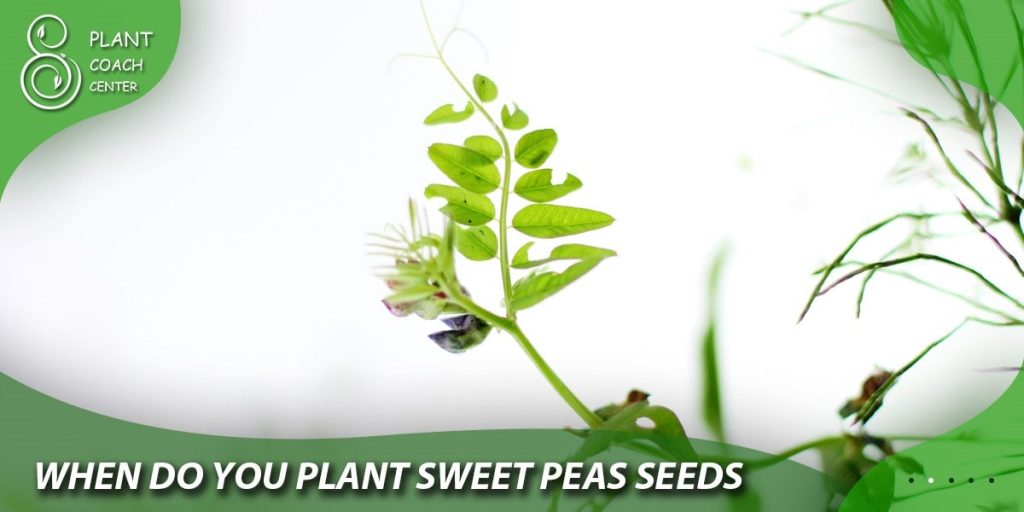
Indoor vs. Outdoor: Choosing the Right Environment
The decision of where to begin your sweet pea journey – indoors or outdoors – is a choice that can significantly influence the trajectory of your plants’ growth. Each approach comes with its own advantages and considerations, and understanding the dynamics of both options will help you make an informed decision.
Indoor Start
Starting sweet peas indoors gives you greater control over the early stages of growth. Sowing seeds in pots or trays creates a controlled environment where factors like temperature, moisture, and light can be regulated. This can lead to quicker and more predictable germination, especially in regions where unpredictable spring weather may challenge direct outdoor sowing.
Furthermore, indoor starts allow you to extend the growing season, giving your sweet peas a head start before transplanting them outdoors. This is particularly beneficial in colder climates where the growing season is relatively short. Just ensure you acclimate your indoor-raised seedlings to outdoor conditions gradually before transplanting them, as sudden environmental changes can stress the plants.
Direct Outdoor Sowing
Direct outdoor sowing offers a more natural approach that aligns with the plants’ preferences. Sweet peas have long taproots that don’t appreciate transplanting, so by sowing directly in the garden, you eliminate the disturbance caused by transplanting.
Additionally, outdoor-sown sweet peas are exposed to outdoor elements from the start, allowing them to immediately adapt to the environment. They can also establish more robust root systems as they grow in their intended location, often leading to more vigorous plants.
Consider your local climate, growing season, and gardening goals when choosing between indoor and outdoor starts. Both approaches can yield successful results, but they require different levels of attention and care. The purpose of whichever path you choose is to create a tapestry of sweet pea blooms that bring joy and beauty to your outdoor space.
Soil Serenade: Creating the Ideal Bed
Behind every thriving sweet pea vine stands a foundation of well-prepared soil, rich in nutrients and conducive to healthy growth. Creating the ideal bed for your sweet peas involves a harmonious blend of soil preparation techniques, ensuring your plants have the best possible start.
Choosing the Right Soil
Sweet peas thrive in well-draining soil that’s slightly alkaline to neutral (pH around 7). A loamy soil with a balanced sand, silt, and clay mixture is a great choice. This type of soil provides good drainage while retaining sufficient moisture and nutrients.
Amending the Soil
Before planting, amend the soil with organic matter such as compost or well-rotted manure. This enriches the soil’s structure, improves water-holding capacity, and adds essential nutrients that sweet peas need for vigorous growth.
Proper Drainage
Sweet peas detest soggy roots, so ensure the planting area has proper drainage. Raised beds or mounds can be particularly beneficial in areas with heavy clay soil that tends to retain water.
Mulching Magic
A layer of mulch around your sweet pea plants serves multiple purposes. It helps retain soil moisture, suppresses weeds that might compete for nutrients, and prevents soil from splashing onto foliage, which can help reduce the risk of disease.

Fertilizing Strategy
While sweet peas can do well in moderately fertile soil, applying a balanced, slow-release fertilizer during planting helps provide a steady supply of nutrients as the plants grow. Avoid excessive nitrogen, which can lead to excessive foliage growth at the expense of flowers.
Mindful Planting Depth
When planting sweet pea seeds, ensure you follow the recommended planting depth. Typically, this is about 1 to 1.5 inches deep. Planting too deep can delay emergence while planting too shallow might expose the seeds to potential drying out.
Frosty Friends: Navigating Cold Snaps
As you nurture your sweet peas to their full potential, Mother Nature sometimes throws unexpected challenges, particularly in the form of late frosts. These chilly interludes can harm your lovely pea plants, especially in their delicate early stages. However, with some foresight and preparation, you can safeguard your sweet peas from the clutches of frost and ensure their survival.
Monitoring Frost Dates
Understanding the average last frost date in your region is essential. This data is a guideline for when it’s generally safe to plant tender seedlings outdoors without risking frost damage. However, remember that frost dates are not foolproof predictions; unexpected cold snaps can still occur even after the estimated last frost.
Protective Measures
When frost is forecasted, taking preemptive measures can make all the difference. Covering your young sweet pea plants with frost blankets, old bed sheets, or even overturned buckets can create a temporary barrier that shields them from frost’s bite. These coverings trap heat radiating from the ground and provide a few degrees of protection, often enough to stave off damage.
Mulching Mastery
A layer of mulch around the base of your sweet pea plants can help insulate the soil, retaining its warmth and providing a buffer against temperature fluctuations. This is particularly useful for established plants, as the soil’s warmth can radiate upwards, preventing frost from settling on leaves and causing damage.
Water as a Heat Source
Interestingly, moist soil retains heat more effectively than dry soil. Water your sweet peas a day or two before an anticipated frost, as the moisture in the soil will release heat slowly during the cold night, offering some protection to the plants.
Pruning and Recovery
If your sweet pea plants do experience frost damage, resist the urge to immediately prune away damaged foliage. Wait until the danger of frost has passed before assessing the extent of the damage. Often, frost-damaged parts will wither and become more apparent, allowing for precise pruning that promotes new growth.
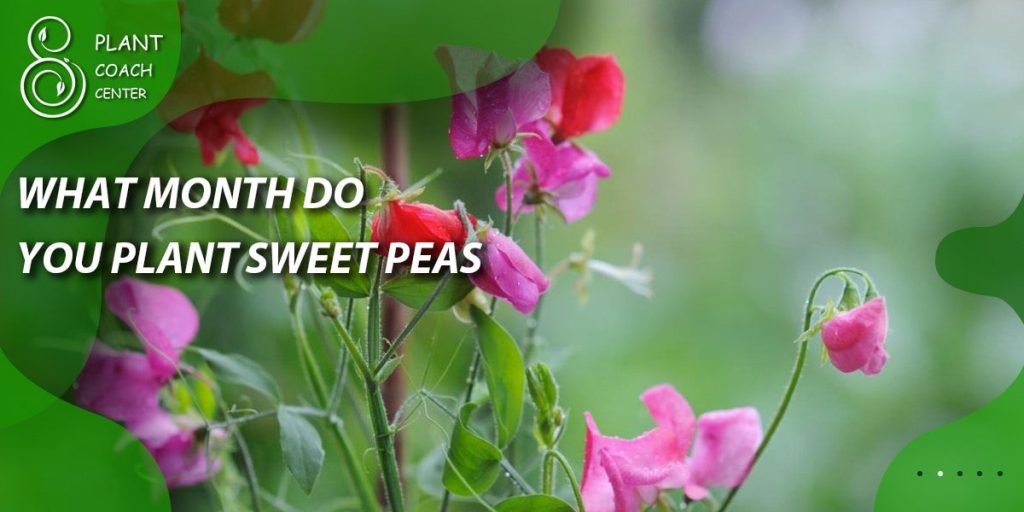
Companions for Life: Intercropping Sweet Peas
In the gardening world, intercropping—planting different species in close proximity for mutual benefit—unveils a realm of possibilities for enhancing plant growth, pest management, and overall garden health. Sweet peas, with their elegant vines and alluring blossoms, have their own set of companions that can not only elevate their aesthetic appeal and contribute to a thriving garden ecosystem.
Floral Partnerships
When it comes to intercropping sweet peas, think of them as the stars of a botanical ensemble. Pairing them with ornamental flowers like nasturtiums, calendula, or pansies can create a visually stunning display. The interplay of colors, shapes, and heights not only adds diversity to your garden but can also attract beneficial pollinators and insects that aid in pest control.
Herb Allies
Intercropping sweet peas with certain herbs can provide an aromatic and functional companion planting approach. Herbs like rosemary, sage, and thyme can deter pests while adding a delightful fragrance. Their growth habits can also offer structural support to climbing sweet peas, creating a dynamic and functional partnership.
Legume Symbiosis
Sweet peas belong to the legume family, which has a unique ability to fix nitrogen in the soil through a beneficial relationship with nitrogen-fixing bacteria. Intercropping sweet peas with other legumes like beans or clover can enrich the soil, enhancing the nutrient content available to all nearby plants.
Tall Guardians
In a garden, spatial optimization is critical. Intercropping sweet peas with taller plants like sunflowers or corn provides natural trellising, giving your sweet peas the support they need to ascend while maximizing vertical growing space.
Strategic Pest Management
Certain plants possess natural pest-repellent properties. Marigolds, for instance, emit chemicals that deter nematodes and other harmful insects. By planting marigolds among your sweet peas, you create a defense line that helps protect your precious blooms.
Aesthetic Unity
Intercropping sweet peas with complementary plants is an art that blends aesthetics and functionality. Consider color schemes, growth habits, and blooming times to ensure a harmonious and continuously captivating garden design.
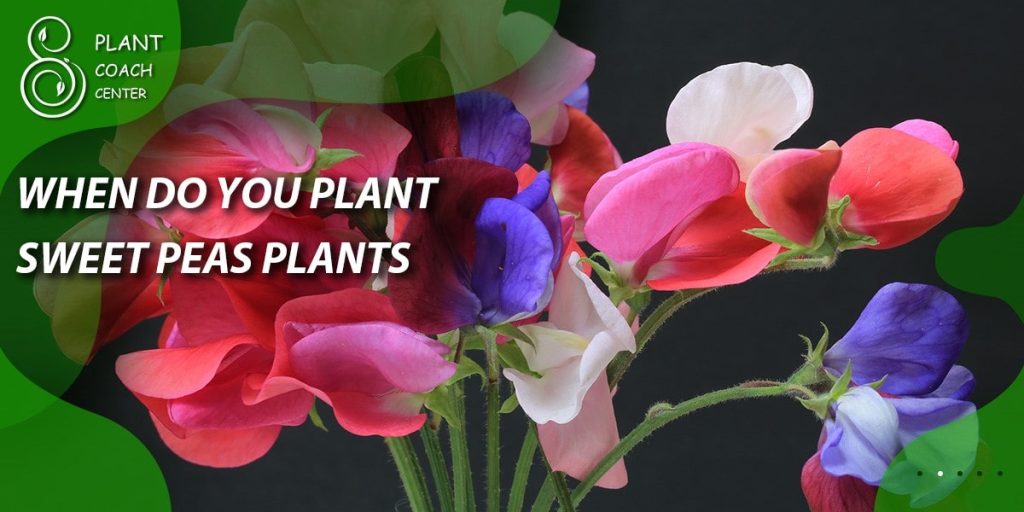
Conclusion
As we conclude our exploration into planting sweet peas, we find ourselves armed with a wealth of knowledge and a newfound appreciation for the delicate balance between nature’s wonders and our nurturing hands.
The journey from selecting the perfect season to deciding between indoor and outdoor starts, from preparing seeds with chilling adventures to crafting the ideal soil bed, and from protecting against frosty friends to finding harmonious companions encapsulates the intricate artistry of cultivating these enchanting blooms.
Whether you’re a seasoned gardener or just beginning to embrace the joys of growing, the guidance offered here will empower you to embark on your sweet pea journey with confidence and creativity. Remember, as you plant those first seeds, you’re not merely sowing plants but crafting a living masterpiece that will grace your garden with elegance and vibrancy.
For further inspiration, tips, and a vibrant gardening community, don’t hesitate to explore the resources available on PlantCouchCenter.com – your companion on the path to sweet pea success and all things green and growing. Happy gardening!
When is the best time to plant sweet peas?
Plant sweet peas in late winter to early spring, ensuring a relaxed and well-draining environment for optimal growth.
Can I start sweet pea seeds indoors?
Yes, starting seeds indoors provides better control over germination and can extend the growing season.
How do I protect sweet peas from late frosts?
Use frost blankets or coverings, water the soil before frost, and consider mulching to safeguard young sweet pea plants.


